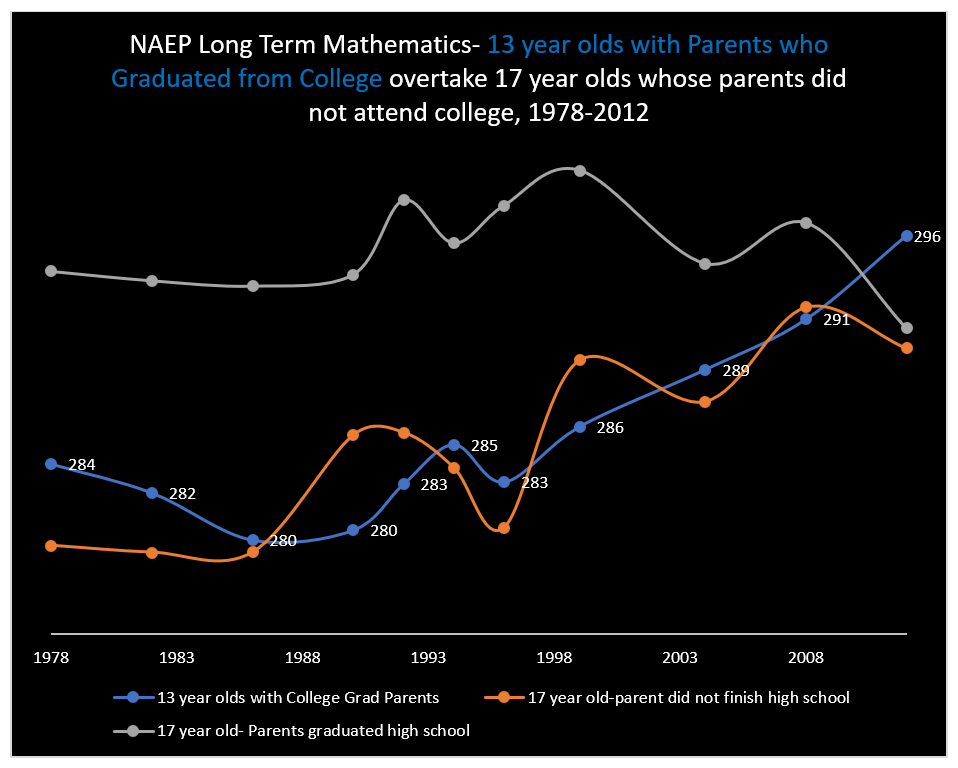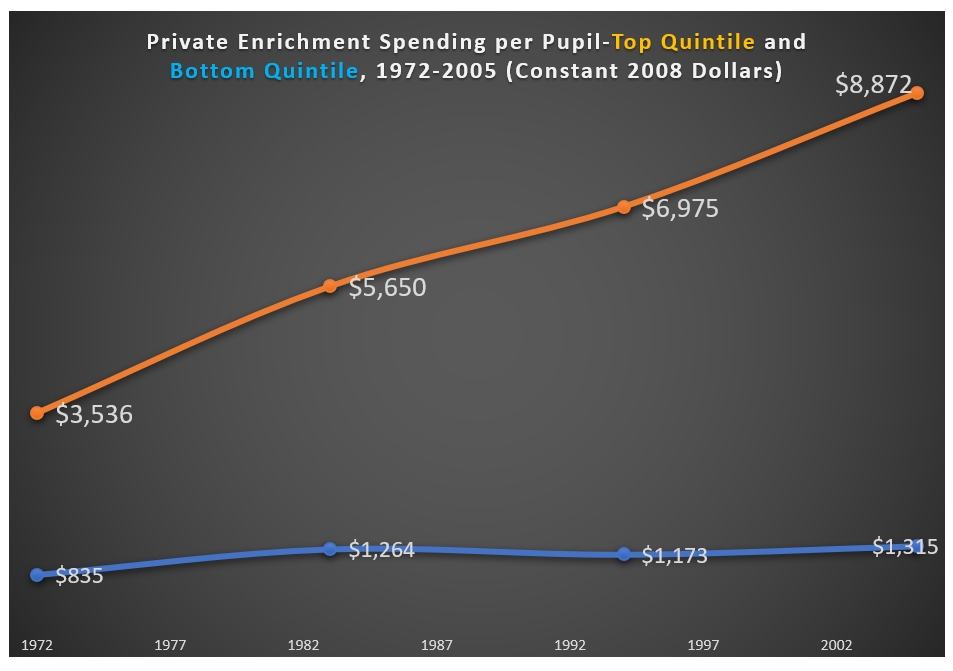
The biggest K-12 question over the next 10 years likely will remain the same as it has been in previous decades: Which students get the opportunity to participate in multi-vendor education, and which do not?
Only a small (but growing) number of people recognize the question’s importance.
The public education system is rigged in favor of the well-to-do and against the less fortunate. Consider the chart below, which shows that American 13-year-olds with college-graduate parents show a better grasp of math than 17-year-olds whose parents did not attend college.

This is not solely reflective of the fact that advantaged kids have access to higher-performing schools, although that surely is part of the story. It’s also the case that well-to-do Americans started exercising multi-vendor education decades ago.
So how can advantaged 13-year-olds know more math than not-so-advantaged 17-year-olds? It might have a lot to do with private tutors, the educational network Kumon, the supplemental math-learning franchise Mathnasium and other perks their parents paid for out of their own pockets. Look at the chart below; do you think what it illustrates has something to do with our scant progress in closing achievement gaps?
Me too.

Unbundling of education is at an advanced stage for the well-to-do. They generally attend schools – the more effective ones – but also have more supplemental education opportunities. In other words, the privileged get access to the fanciest schools and then have the equivalent of a privately financed education savings account as a top-off to hire tutors, attend camps, and many other things.
Florida lawmakers have taken small steps to expand opportunities for disadvantaged students. They’ve created new opportunities for them to attend different public and private schools in the form of charter schools and private choice programs. They’ve created an education savings account program for children with disabilities, giving participating families expanded flexibility to choose schools, hire therapists and specialists. And they’ve created a modest education savings account program ($500 per year) for students struggling with literacy.
Multi-vendor education is here to stay. Whether disadvantaged students will be able to participate in it is a question we should address in the decade ahead.



Great point. Clever framing.
If I may ask, what’s the source of the “Private Enrichment Spending” per pupil? I’d like to cite that….conforms with my experience.
Thanks Mike- try this https://www.russellsage.org/publications/whither-opportunity